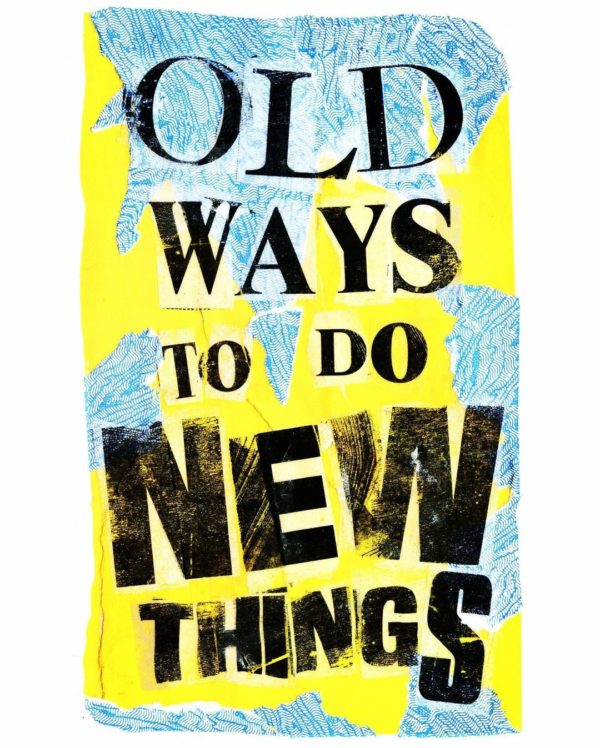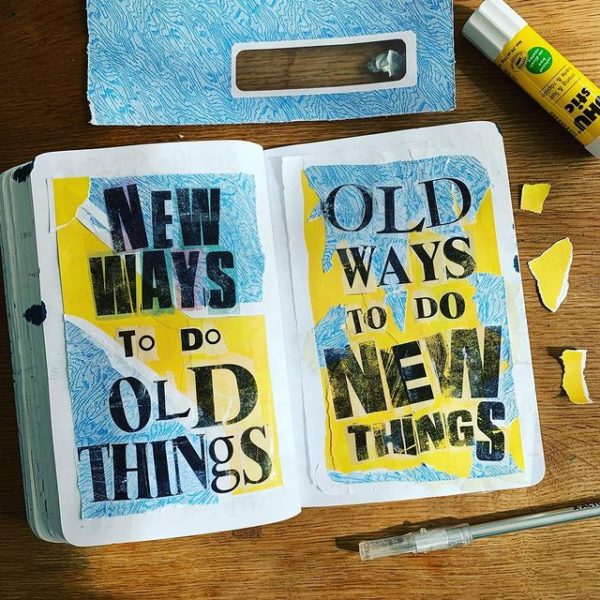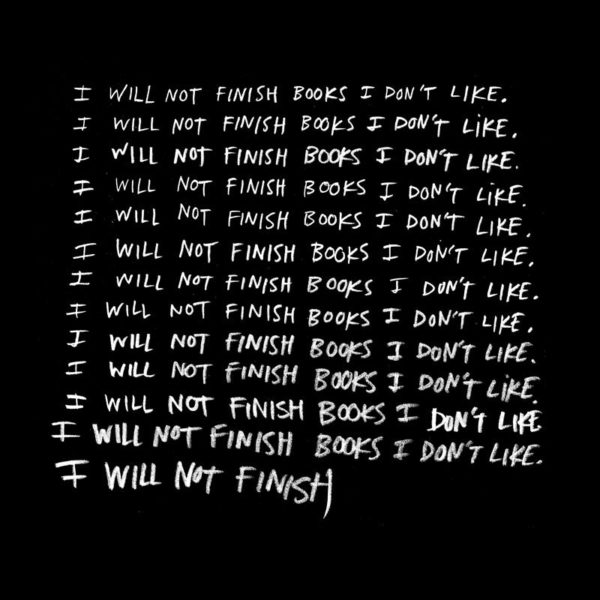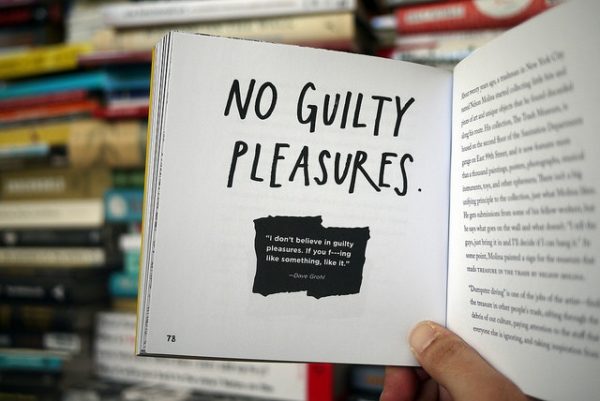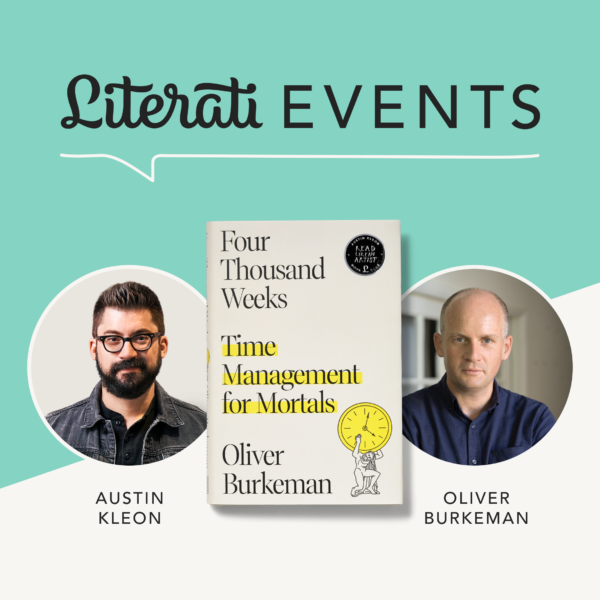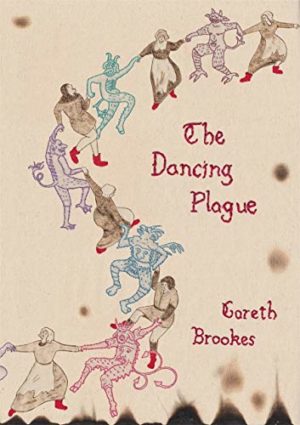In yesterday’s newsletter, I wrote about looking for old ways to do new things. (And old ways to do old things, and new ways to do old things and new ways to do new things.)
My most important rule for reading
In this week’s Tuesday newsletter, I wrote about my most important rule for reading: “Read at Whim!”
Interview with Oliver Burkeman
Next Monday, March 28th at 2PM central, I’ll be interviewing Oliver Burkeman about his work and his book, Four Thousand Weeks. You can set a reminder to tune in via YouTube:
This was really fun. Watch my chat with Oliver on Youtube:
10 good books I read this winter
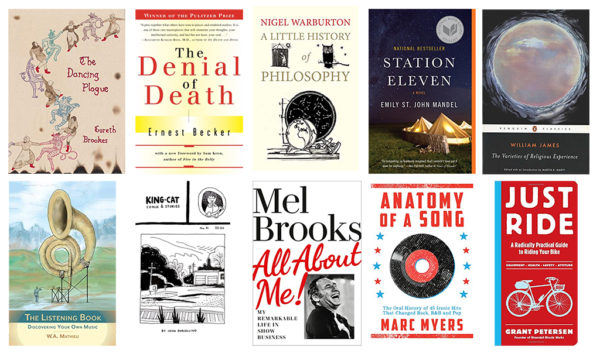
This winter was not quite as tough as last winter, but it was still very bleak in streaks. My reading life didn’t quite match up to last year, but it was still good. Listed in the order I read them:
The Dancing Plague
Gareth Brookes
A comic like I’ve never seen, based on a dancing plague that happened in Strasbourg in 1518, made with a combination of “burning, stitching, and Photoshopping.” (I recommend this wonderful post about the process of making the book.) Does what comics do at their best. A perfect blend of materials and story. (This interview is really excellent, especially this part: “I’ve heard people say it takes 10,000 hours to master your style or your line or something, but to be honest I think it takes 10,000 hours to become boring and mediocre. The moment you master something is the moment you stop being creative.”) The medieval, mystical visions connect it with my favorite book from last year, Lauren Groff’s Matrix.
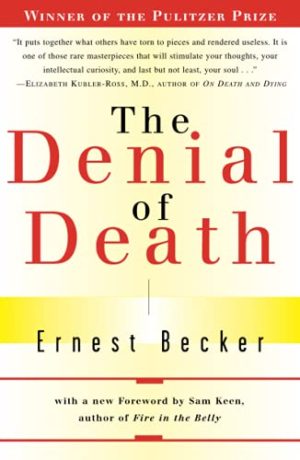 The Denial of Death
The Denial of Death
Ernest Becker
Elisa Gabbert said that when she read this book she “had the immediate sense that it belongs to the canon of books that… explain everything.” I feel a bit like that, too. I am especially interested in “The Creative Solution,” in which Becker talks about how many artists replace religion with art, only to discover that it’s never enough. “Whatever [the creative person] does he is stuck with himself, can’t get securely outside and beyond himself. He is also stuck with the work of art itself. Like any material achievement it is visible, earthly, impermanent.” Becker says: Look, if you’re an average person, you make gifts “that society specifies in advance,” but if you’re an artist, you give gifts that basically nobody asked for. And so, “there is no way for the artist to be at peace with his work or with the society that accepts it.” Bleak? Depends. For me, it was extremely comforting. As I’ve said for years, Death and Deadlines are my great motivators.
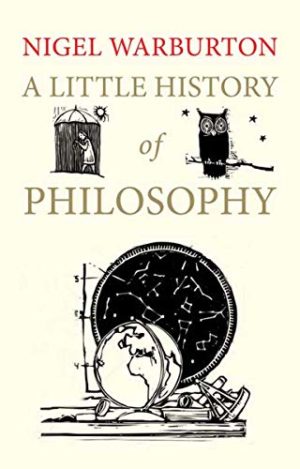 A Little History of Philosophy
A Little History of Philosophy
Nigel Warburton
I came to the the Little Histories series after discovering and loving E.M. Gombrich’s A Little History of the World. I love samplers like this that introduce you to a great number of thinkers, giving you a very broad overview, and then you can pick and choose who you want to study in more depth. I think I may try to read a book from this series each year. (This episode of Warburton’s podcast Philosophy Bites is a good short introduction to the book. I was tickled to learn that the philosopher he most regretted leaving out was my favorite, Diogenes.)
 Station Eleven
Station Eleven
Emily St. John Mandel
I read this because everyone told me I was going to love the TV show. I enjoyed the book very much, and, in fact, had one of my first bathtub reading experiences with it! I had a delightful weekend afternoon soaking and finishing the final pages. As for the TV show: I found it completely bewildering. They changed the story in so many fundamental ways! While watching, I would say to Meg, “That’s not in the book,” and she would reply, “How is that possible?? It’s a major plot point!” and I would say, “I know!!!” I will say the costume design and the music supervision on the TV show was wonderful. I’d love to know what it would play like without the swelling strings and manipulative score. (In contrast, I re-read No Country For Old Men, and thought the same thing I thought when I read it over a decade ago: “This will make an amazing movie.” That movie is both extremely faithful to the book AND it uses no music! It’s a horror western without music! Incredible.)
 The Varieties of Religious Experience
The Varieties of Religious Experience
William James
The thing to know about William James is that the dude could write. He invents turns of phrases and sentences that just kind of leap out at you. Underlines everywhere. The other thing to know is that he was sort of a failed artist. (People have often joked that his brother Henry James was the psychologist and William James was the real storyteller.) I love reading him. This is a centripetal book — I was sucked into it from other books that point to it — but it’s also centrifugal, in that it spins you out to original sources that James uses. I will admit I did a lot of skimming of the individual stories in the books, which James sometimes quotes in several pages long blocks. But this is one of those books that goes up on my list of personal classics, one that I’m sure I’ll be returning to again. (I might revisit Robert Richardson’s bio of James.)
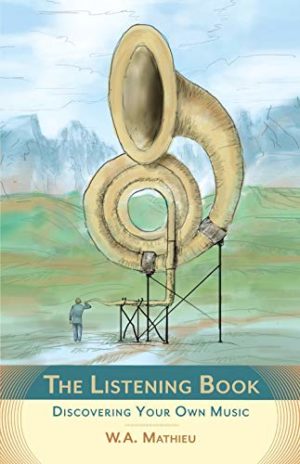 The Listening Book: Discovering Your Own Music
The Listening Book: Discovering Your Own Music
W.A. Mathieu
I read a handful of these essays on the art of listening at each meal. I started out with a library copy and then was taking so many notes that I ordered my own. It’s very beautiful and very unique. (The closest thing I can think of is R. Murray Schafer’s Ear Cleaning.) If you search for this book on a streaming service, there’s actually an audiobook of Mathieu reading some of the essays, accompanied by his own music. (Which, depending on your taste, might be a bonus and might not.) Many thanks to Derek Sivers for the recommendation.
 King-Cat 81
King-Cat 81
John Porcellino
This is a zine, not a full-length book, but King-Cat is like a great ongoing book, and each issue means so much to me. I am a $5/month subscriber to Porcellino’s Patreon, which means I get every issue he makes mailed to me the minute it’s in the world. I set aside an hour or two and I go outside in the sunshine and I read the issue cover to cover. This one was especially wonderful. I think John P. is a true American original, a punk-zen-midwestern heir to Thoreau. Give him a MacArthur, you cowards.
 All About Me
All About Me
Mel Brooks
I can’t imagine digesting this in any form other than the audiobook, which includes Brooks frequently breaking into song. Brooks was born around the same time as my grandparents, and now that I don’t have any left in the world, hearing him tell stories was very comforting, like visiting a world that no longer exists. That said, the whole time, I was also reminded of Orwell: “Autobiography is only to be trusted when it reveals something disgraceful. A man who gives a good account of himself is probably lying, since any life when viewed from the inside is simply a series of defeats.” The highlights of this highlight reel were the chapters on the making of The Producers and Young Frankenstein. Again, I’ll admit I did a bit of skipping around. If you just want to get a warm dose of his reminiscing, try this Fresh Air episode. (Related reading: “Say yes and never do it.”)
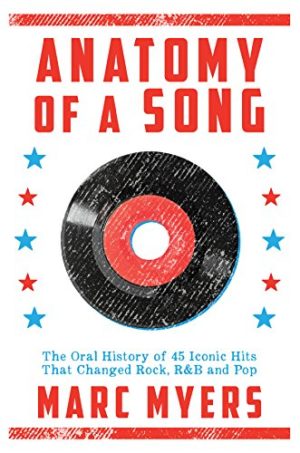 Anatomy of a Song: The Oral History of 45 Iconic Hits That Changed Rock, R&B and Pop
Anatomy of a Song: The Oral History of 45 Iconic Hits That Changed Rock, R&B and Pop
Marc Myers
When I am bottomed out with my reading, I look for quick music books, and I especially love oral histories. This is not the strongest one I’ve ever read — it’s a bit hit or miss, depending on who’s doing the talking — but it’s an enjoyable collection of Myers’ popular column. Sometimes I need a book like this just to regain my momentum. When you’re cycling, there’s something called a “recovery ride”: you don’t actually stop to rest your legs, you just go easy, get the blood flowing. That’s what a book like this does for me. (If you want something a little deeper on songwriting, check out Paul Zollo’s Songwriters on Songwriting books.)
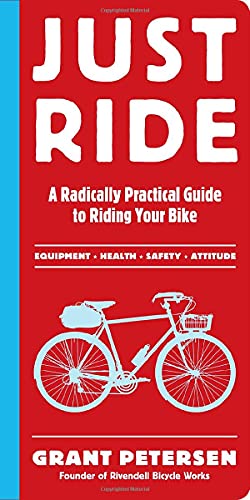 Just Ride: A Radically Practical Guide to Riding Your Bike
Just Ride: A Radically Practical Guide to Riding Your Bike
Grant Petersen
This was recommended to me after I shared my new obsession with bicycling. Because the world is very small, I discovered that my current editor at Workman, Mary Ellen O’Neill, worked on this book around the time that Steal Like an Artist came out. (Sidenote: this is the kind of book Workman does best: unique trim size, paperback, but feels classy, great design and illustrations.) This was the perfect book at the perfect time: after a few weeks of riding with serious cyclists, and starting to feel the pressure to give into the synthetic stretchy shirts and clipless pedals, it captured the spirit I want in my own cycling (and in my art): The bicycle is a toy, and you’re supposed to have fun with it. Just ride. (Just draw. Just write. Just read…)
* * *
Two more books worth mentioning: Anne Rice’s Interview With The Vampire (trashy, which I enjoy, but too long) and Joy Williams’ Ill Nature (ranting, which I also enjoy, but back-loaded: the essays on “Autumn” and writings at the end are worth the price of admission.)
* * *
If you liked this post, you’ll love my newsletter.
Why Am I Talking?
In the comments of my newsletter on interviewing and wanting to be a better listener, a reader told me about an acronym people in the coaching world use frequently: WAIT, which stands for “Why Am I Talking?”
There’s something about this acronym that is more helpful and hits much harder than my usual “Shut up and listen” mantra.
I’ve taken to giving myself temporary tattoos on my arm:

I just spent the week doing promotion for the Steal Like an Artist 10th anniversary, and WAIT took on a different meaning: Why am I talking here? What am I trying to do with my words? It sort of kept me “on point.”
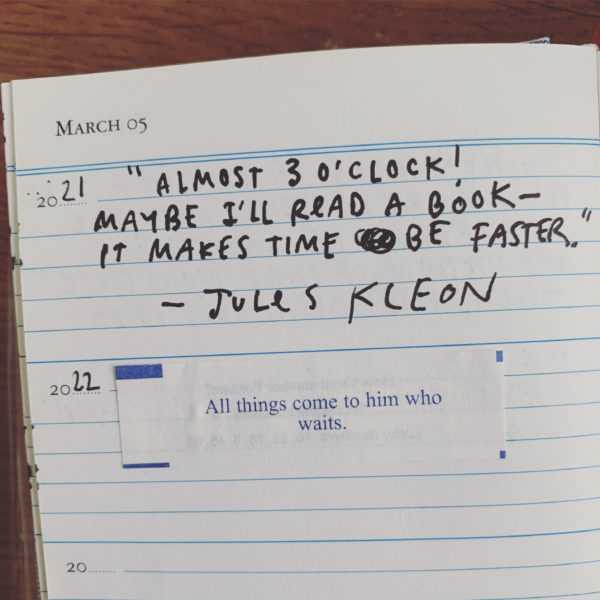
We are just about to break ground on my new studio. Construction always takes about twice as long as you think it will, so the WAIT on my wrist tells me to relax, stay calm, the days will accumulate.
Related reading: Hit pause
- ← Newer posts
- 1
- …
- 91
- 92
- 93
- 94
- 95
- …
- 635
- Older posts→
